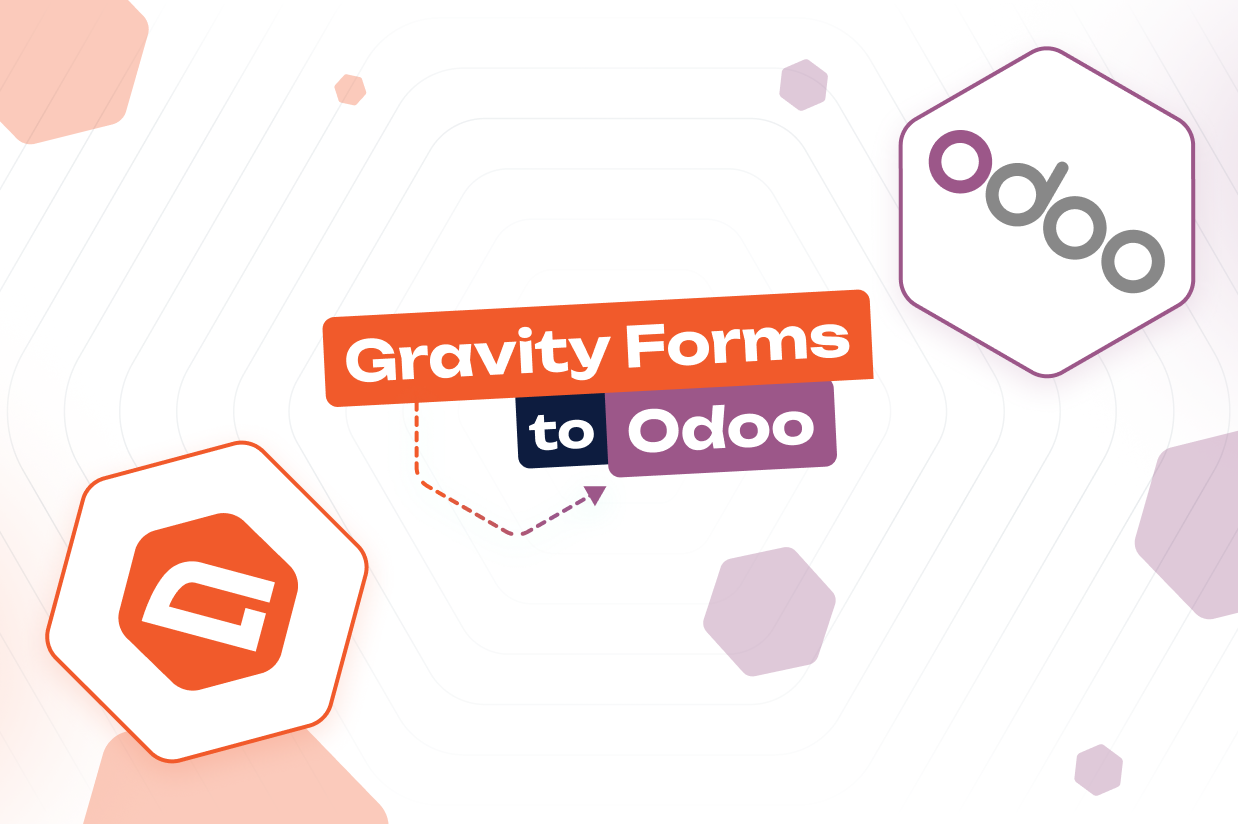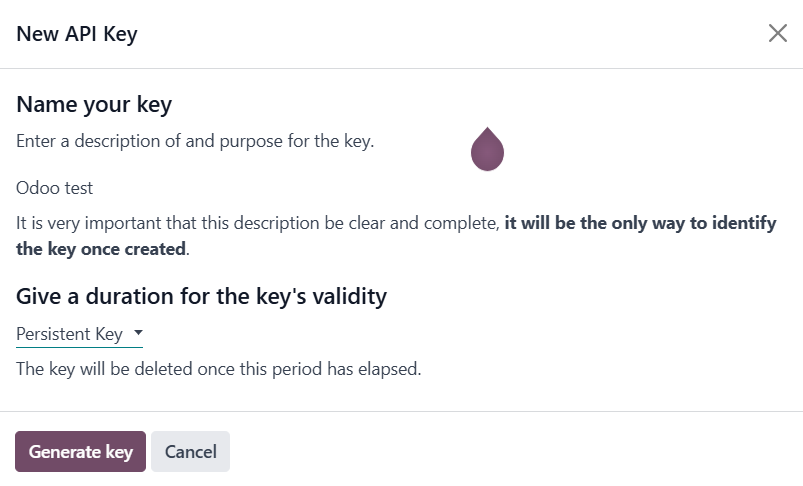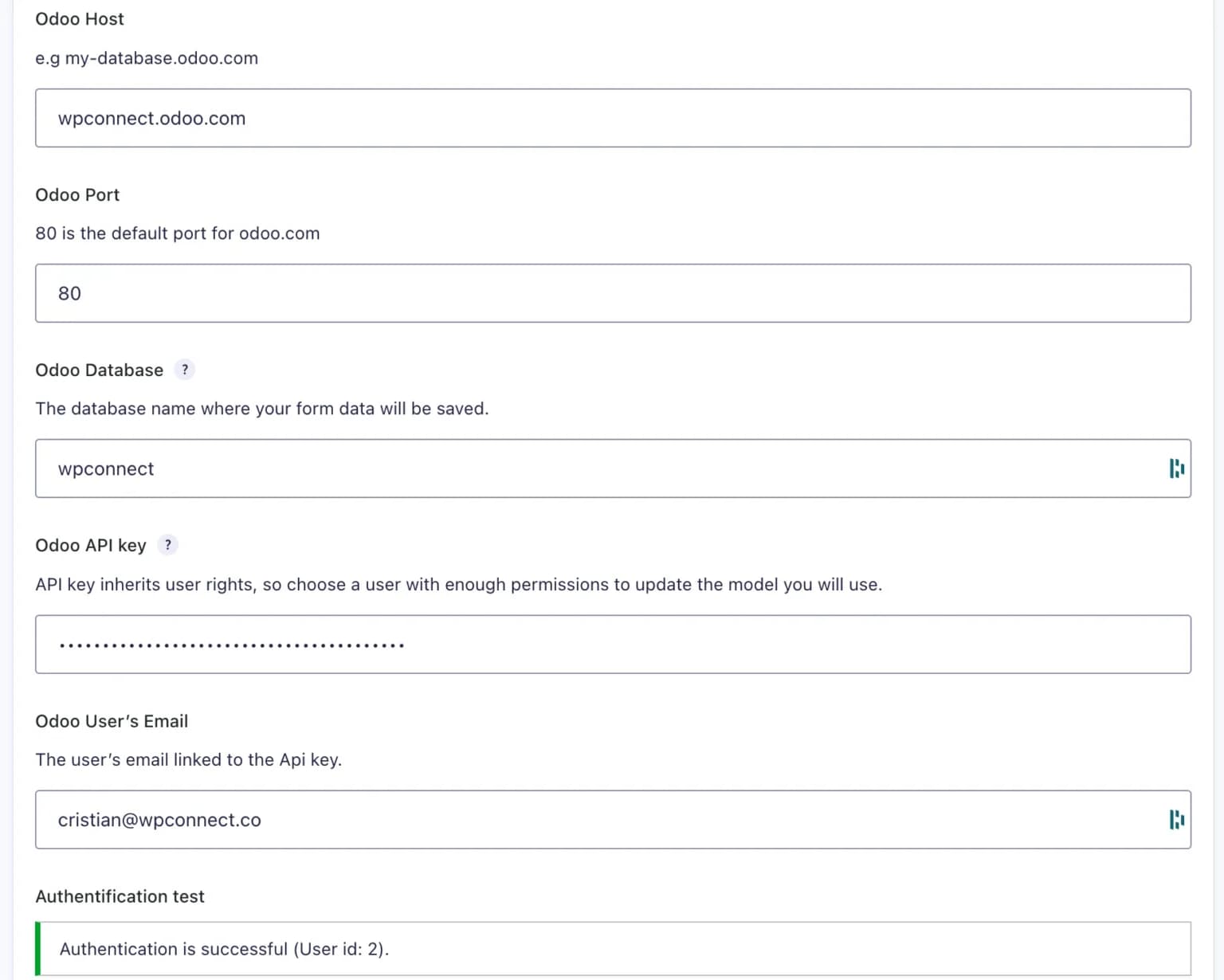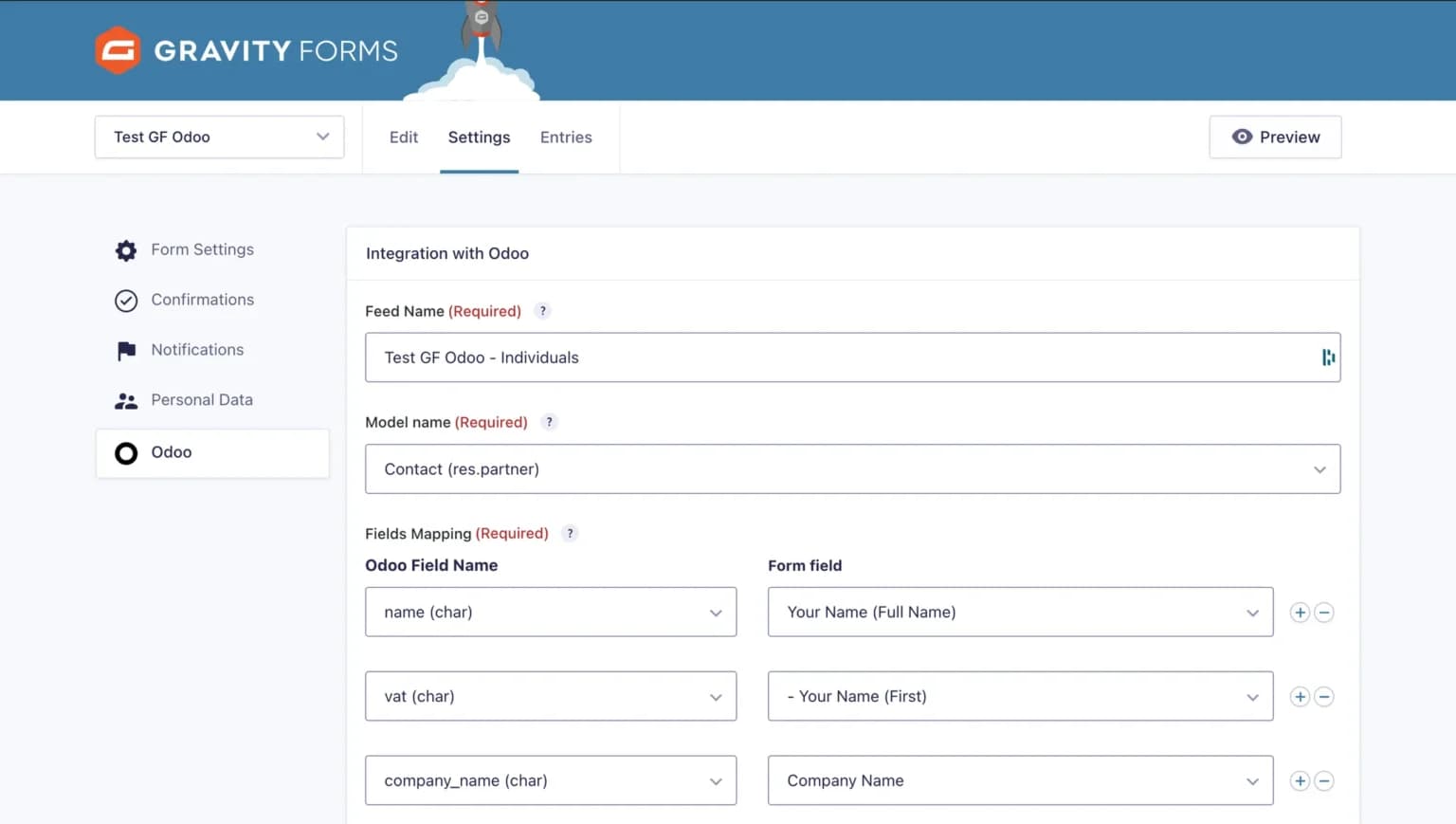Gravity Forms to Odoo: The no-code integration that boosts your productivity
Written by the Editorial team at WP connect…
We’re excited to introduce this no-code Gravity Forms to Odoo integration. This module lets you sync your Gravity Forms entries directly with your Odoo ecosystem, streamlining your workflows and unlocking the full potential of your web data.
If you use WordPress to collect data, you know the frustration of not being able to leverage your web data directly in business tools like Odoo. Every form submission requires manual entry into your CRM, creating delays, error risks, and wasted time for your teams.
This integration transforms how you work by delivering operational efficiency and powerful automation possibilities. Discover practical use cases and learn how to set up your first Gravity Forms to Odoo connection.
Why connect Gravity Forms to Odoo?
Gravity Forms is an excellent form builder for WordPress. The plugin is known for its versatility and effectiveness. From simple contact forms to lead capture forms, customer feedback, online payments and more, Gravity Forms has proven itself.
On the other hand, Odoo is a management platform offering dozens of integrations and business management applications.
However, these two platforms don’t communicate naturally. This could create several problems:
- Double data entry or import/export of Gravity Forms data into Odoo.
- Data consistency issues between your different tools.
- Forgotten and delayed processing of customer requests from Gravity Forms.
- Time waste and inefficiency in your operational teams.
- No visibility across all your web requests and data.
- Information silos and missed opportunities.
- And much more.
The solution lies in integrating both platforms: a seamless connection between Gravity Forms and Odoo.
With this integration, your WordPress forms feed directly into your Odoo modules, according to your rules. A lead capture form on Gravity Forms? Sync new entries directly with Odoo to turn them into prospects for your campaigns. The integration lets you configure and trigger business processes from your Gravity Forms.
Let’s explore concrete examples of what you can accomplish with this Gravity Forms integration for Odoo platform.
What can you automate with the Gravity Forms integration for Odoo?
Integrating Gravity Forms with Odoo opens up numerous workflow and automation possibilities. Here are examples to showcase this integration’s potential.
Transfer web form leads to your Odoo CRM
When a prospect fills out your contact or quote request form, their information instantly transfers to Odoo and creates a new CRM lead. This enables your teams to make hot contact and accelerate request processing.
Acting quickly with the right information undoubtedly increases your teams’ probability of converting incoming leads to customers. The integration eliminates manual entry and oversight risks for your teams. They can focus on what matters: responding to inquiries and converting prospects.
Manage event registrations in Odoo
Do you regularly organize webinars, training, or other events? This integration will significantly simplify your daily operations.
Sync Gravity Forms registrations directly with Odoo. Access and view your participant list in a unified interface.
Plus, you can use Odoo’s features to better manage communications: emailing, attendance tracking, task management, and team collaboration.
Enhance project management with Odoo and Gravity Forms
Connect your Gravity Forms entries to your Odoo projects. With each new submission, the integration feeds project-related data directly into Odoo where your existing workflows can take over. Whether it’s change requests, bug reports, or client feedback, the information flows seamlessly into your project management system.
The Gravity Forms Odoo integration eliminates email back-and-forth and centralizes all requests in one tool. Your teams gain visibility on each project and can effectively prioritize their interventions.
Plus, Odoo offers several ways to be proactive in management. You can automate immediate customer confirmation with a tracking number.
Centralize contact management with Gravity Forms and Odoo
Does your business receive partnership requests, spontaneous applications, or supplier contacts through different forms? The integration automates contact creation and categorization in Odoo.
You can manage multiple flows to organize your contacts seamlessly. A “Become a Partner” form feeds directly into your supplier database, while an application form creates contacts in the recruitment module.
You can even automatically segment contacts based on their responses. The Gravity Forms Odoo integration module also enables conditional synchronization. Send only responses meeting specific conditions.
As you can see, there are virtually no limits to possible automations with this module. And the cherry on top: configuring a Gravity Forms Odoo integration takes just minutes.
Here’s a 5-step guide:
5 steps to set up your first Odoo Gravity Forms integration
Step 1: Plugin installation and activation
First, purchase the Odoo Add-On from the WP connect website. Then, log into WordPress to install your module following the standard plugin installation process.
Once the add-on is installed and activated, you’ll be able to exchange API keys between Gravity Forms and Odoo.
Step 2: Generate your Odoo API Key
In your Odoo interface, click your name in the top right, then Preferences. Go to Account Security > API Keys and click Add New API Key.
Enter your password, name your key, and generate it. Keep this key secure.
Step 3: Connect WordPress and Odoo
Return to Gravity Forms > Settings > Odoo. Paste your API key in the designated field, add the email associated with your Odoo account and your database information.
Click Save. The Authentication Successful message confirms the connection.
Step 4: Configure field mapping
Open the form you want to connect and go to Settings > Odoo. Create a new feed, select the destination Odoo model, then map each form field to the corresponding Odoo field.
Save your settings.
Step 5: Activation and testing
Activate your feed and test the integration with dummy data. Verify the data appears correctly in Odoo. You can add conditional logic to filter which submissions sync.
Your integration is now operational! For a detailed step-by-step guide, check our complete documentation on the WP connect website.
FAQs about the Gravity Forms Odoo integration
Can I filter which form submissions are sent to Odoo?
Yes, the integration includes a conditional logic feature. You can set precise rules to send only submissions meeting specific criteria (request type, field value, etc.).
Do I need programming skills to configure the integration?
Absolutely not. The integration is entirely no-code with an intuitive mapping interface. Configuration happens easily through the WordPress interface, without any coding. Our detailed documentation guides you through every step.
How often is data synchronized between Gravity Forms and Odoo?
Synchronization is instant. As soon as a form is submitted on your site, data immediately transfers to Odoo in real-time.
Final thoughts
The Odoo Add-On for Gravity Forms represents a real turning point for productivity and operational efficiency gains.
Without code, without technical complexity, you automate advanced workflows. Your teams can focus on your company’s strategic missions and offer greater responsiveness in handling customer requests.
Today, in the era of no-code and AI, automation is no longer reserved for large companies. It offers potential to create dynamic workflows to customize your business processes.
At WP connect, we work to make this accessible to businesses of all sizes through our no-code add-ons and plugins. Feel free to discover other WordPress API integrations on our website.



